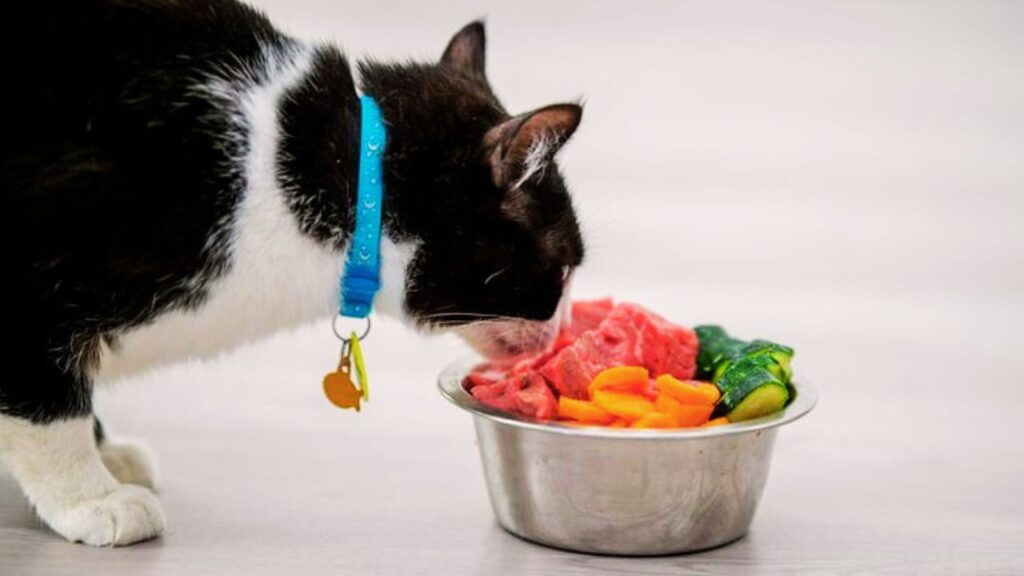
With a growing focus on pet health, more cat owners are exploring homemade cat food as an alternative to commercial diets. Preparing meals for your feline friend offers better control over ingredients, avoids unnecessary fillers, and caters to specific dietary needs. However ensuring your cat gets all the essential nutrients is crucial. This guide provides a step-by-step approach to creating nutritionally balanced, vet-approved homemade meals for your cat.
Homemade cat food has become a popular choice for pet owners who want to provide healthier, natural meals for their feline friends. With concerns about additives, fillers, and low-quality ingredients in commercial cat food, preparing meals at home offers a customized approach to your cat’s nutrition. In this guide, we’ll explore the benefits of homemade cat food and how to create balanced, safe, and vet-approved meals.
What are the Benefits of Making Homemade Cat Food?
Homemade cat food can have its benefits:
Control over Ingredients:
You select the quality and source of every ingredient, avoiding harmful additives, preservatives, or fillers common in commercial food.
Customization for dietary needs:
Our customized recipes can benefit cats with allergies, sensitivities, or other specific medical conditions.
Improved Freshness:
Cat food purchased from the stores may have undergone lengthy storage and processing, and most of the time, cats should always eat freshly prepared food.
Cost-Effective:
Commercial premium cat food can be pricey, while homemade cat food can be prepared Recipes for making homemade cat food are easy to follow.
Stronger Bond with Your Cat:
Meal prepping for your cat adds value to the care you provide and can also improve your relationship with your feline friend.
Essential Nutrients for Cats
Cats are obligate carnivores in that their diet mainly relies on animal protein. Here’s what every meal for your cat should contain:
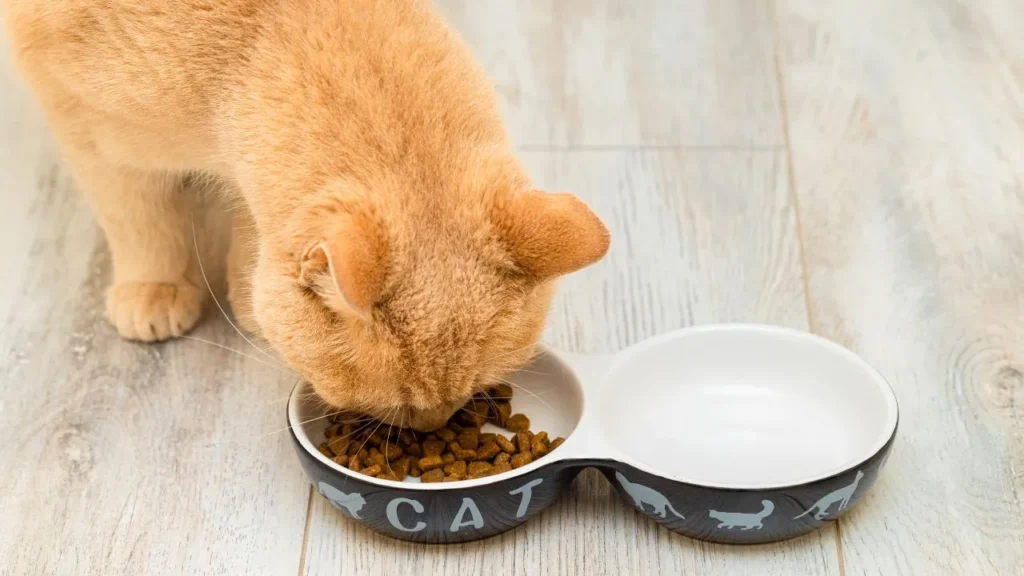
Protein: Felines need a serum protein level, so chicken, turkey, fish, or beef are among the preferred protein sources.
Fat: Healthy fats are an energy source and good for skin and coat health. Include fish oil or chicken fat as sources.
Vitamins and Minerals: Certain nutrients such as taurine (so crucial for heart and vision health), calcium, and phosphorus, must be present in the diet.
Water: Most cats don’t drink enough fluid. They should stay hydrated
Homemade cat food: What you need to know
Best Meat for Cats
Natural cat food recipes use high-quality proteins as a base. Suitable options include:
Chicken and Fish Recipes for Cats: Chicken is an easily digestible lean meat, and fish (including salmon) provides omega-3 fatty acids.
Beef and Turkey: Protein-packed, ideal for the active feline.
Organs: The liver and the heart are good sources of taurine.
Safe Vegetables for Cats
Cats don’t need vegetables to survive but small bits can help digestion. opts for fiber-rich varieties such as pumpkin or carrots. Avoid foods detrimental to cats such as onions and garlic.
Essential Additives for DIY Cat Food
Even when you make food from scratch, most homemade recipes still need more essential vitamins and minerals. Consider adding:
- Calcium powders to help build healthy bones.
- Taurine supplements and heart health:
- Multivitamins for those micronutrient deficits
What is the Best Homemade Food for Cats?
Great home cooked food is high-protein, full of good fats, and supplemented with vitamins and minerals. Examples include:
- Eats chicken and vegetables
- Supplemented beef or turkey recipes
- Omega-3 fat-rich fish-based recipes
Homemade Cat Food Supplement
Supplements are essential to home-prepped cat food. Cats need taurine for heart and vision health, calcium for bones, and omega-3 fatty acids for skin and coat health. Key supplements include:
- Taurine: Important for heart and eye function.
- Calcium: To build strong bones and teeth.
- Omega-3 Fatty Acids – Help give your dog a shiny coat and healthy skin.
- Vitamin E: Helps immune function.
How to Make Homemade Cat Food
Step 1: Gather Ingredients
- For a balanced cat diet, add
- Protein-rich meats (chicken, turkey, beef, or fish).
- Organs such as liver or kidney for taurine.
- Non-dairy vegetables like pumpkin or spinach
- Calcium, taurine, and vitamin supplement
Step 2: Prepare or Cook the Ingredients
Raw Cat Food Diet: Meats and frozen meals resemble a cat’s natural diet—just be sure to handle raw meat safely.
Cooked Cat Food: Lightly cooking the meat kills harmful bacteria but still preserves the nutrients.
Step 3: Blend and Add Additives
- Combine meat, organs, and vegetables in a food processor for a smooth texture.
- Add some water or broth to keep things moist.
- Use supplements as prescribed.
Step 4: Portion and Store
- Package meals into single-serving portions.
- Store in refrigerator or freezer in airtight containers or freezer bags.
Easy, Cheap, Homemade Cat Food
Cat food can also be cheap and easy to make, requiring few ingredients.
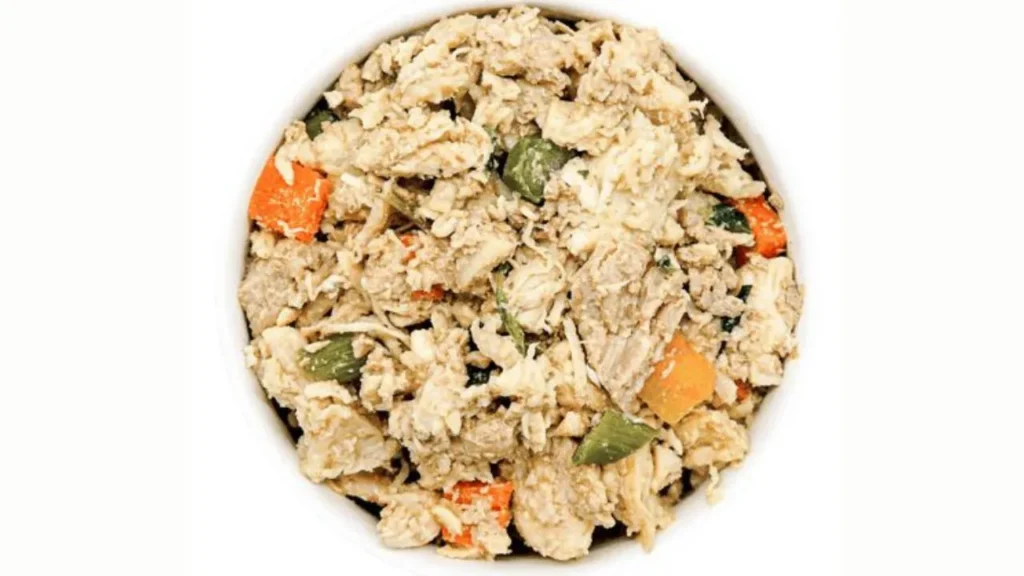
Recipe: Chicken and Rice Bowl
Ingredients:
- 1 cup cooked chicken (shredded)
- 1/4 cup cooked white rice
- 1 tsp fish oil
Instructions:
- Combine all ingredients in a bowl.
- Serve immediately or refrigerate for up to three days.
Homemade Cat Food Recipes
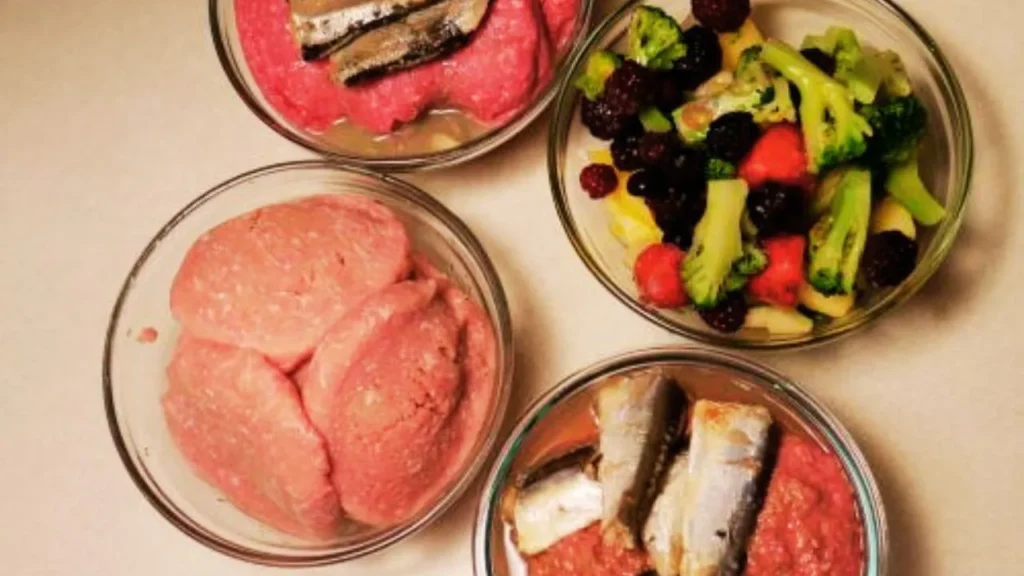
Recipe 1: Basic Chicken and Liver Meal
Ingredients:
- 2 lbs of chicken(breast or thighs)
- 1/2 cup chicken liver
- 1/4 cup cooked pumpkin
- 1/4 teaspoon of taurine supplement
- Water or broth as needed for consistency
Instructions:
- The chicken and liver should be lightly cooked.
- Puree with pumpkin and water until smooth.
- Add taurine and mix well.
- Serve immediately or store in portions.
Recipe 2: Fish Feast
Ingredients:
- 1 lb salmon or mackerel
- 1/2 cup steamed spinach
- 1/4 cup cooked rice
- one teaspoon fish oil
Instructions:
- Thoroughly cook the fish, debone, and flake.
- Stir in steamed spinach and the rice.
- Add fish oil and serve.
Recipe 3: Turkey and Veggie Bowl
Ingredients:
- lb ground turkey
- 1/2 cup chopped carrots
- 1/4 cup peas
- 1/2 teaspoon calcium powder
Instructions:
- Add turkey and cook until browned about 5 minutes.
- Steam carrots and peas.
- Blend all ingredients, calcium powder included, until mixed.
Vet-approved homemade cat food recipes
Talking to your veterinarian first helps ensure your homemade recipes are balanced and appropriate for your cat. Vet-approved recipes usually contain additions to eliminate nutrition gaps.
Turkeys Recipe: Turkey and Pumpkin Medley
- 1 cup cooked ground turkey
- 1/4 cup cooked steamed pumpkin puree
- 1 tsp bone meal powder
Combine ingredients; serve at room temperature.
Ingredients to Avoid for Cats
Some foods are toxic or dangerous to cats and should by no means be part of your cat’s diet:
Onions and Garlic: Even small amounts of each can lead to anemia in cats.
Chocolate and Caffeine: These foods contain theobromine, which is toxic to cats.
Grapes and Raisins: These can cause cats to develop kidney failure.
Dairy Products: While cats love cream, many are lactose intolerant, which can upset their digestive system.
Raw Fish or Eggs: Fresh fish can harbor bacteria or enzymes that could deplete essential nutrients, and fresh eggs can lead to biotin deficiency.
Cooked Bones: Cooked bones can splinter, resulting in choking or internal injury.
Salt and Seasonings: Excessive salt can damage a cat’s kidneys and cause other health problems. Do not add any spices and seasonings to cooked homemade meals.
Balanced Homemade Pet Diet
Homemade dog and cat food should be carefully balanced. Cats have distinct nutritional requirements, and deficiencies can result in health issues. Work with a veterinarian or pet nutritionist to create recipes with the right nutrient balance.
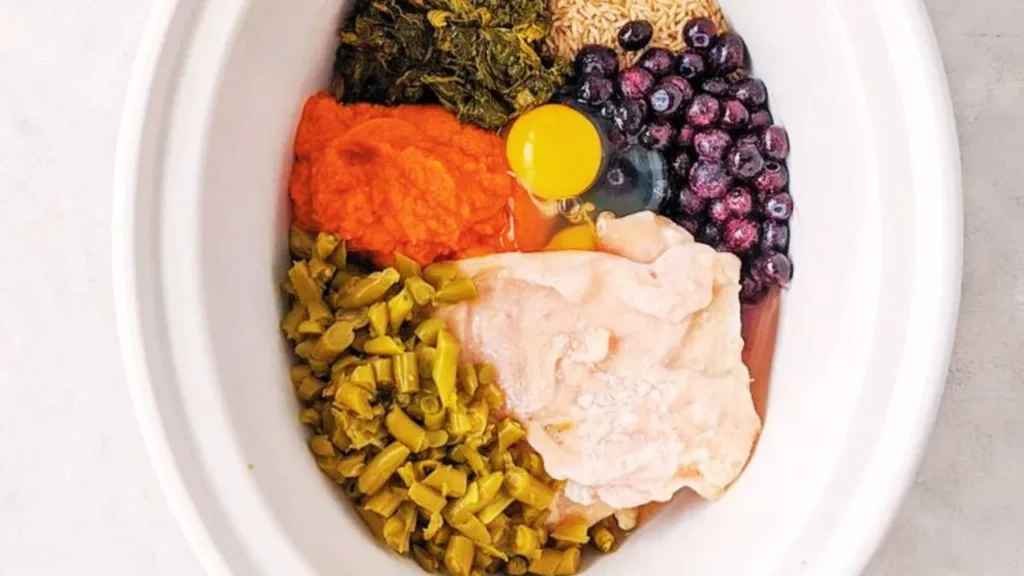
Tips for a Balanced Diet:
Every meal should contain a protein source.
- Include a protein source in every meal.
- Add small amounts of vegetables like carrots or zucchini for fiber.
- Use supplements like taurine, which is critical for heart and vision health.
Best Protein Sources for Cats
Cats depend on protein, which forms the basis of their diet. Some of the best sources are:
Chicken: Lean and easy to find.
Turkey: Good for cats allergic to other meats.
Salmon: Full of omega-3 fatty acids.
Bacon: High in iron and protein.
Duck: An excellent choice for the picky eaters.
Safe Ingredients for Cats
If you choose to make homemade cat food, use only safe and helpful ingredients for your pet:
Carrots: Packed with fiber and vitamins.
Pumpkin: Good for digestion.
Zucchini: Low-calorie, easily digestible.
Storage and Serving Tips
Storage: Store homemade cat food in airtight containers in the refrigerator for up to 3 days or freeze for extended storage.
Serving: Meals should always be served at room temperature to prevent an upset stomach for your cat.
How to Store and Serve Homemade Cat Food
Proper storage and serving practices are key to keeping things fresh and safe:
Refrigeration: Store homemade cat food in the refrigerator in airtight containers for up to three days.
Freezing: For long-term storage, separate meals into portions and freeze them in airtight containers or freezer bags. You also get three months of frozen food.
Thawing: Defrost frozen meals in the fridge overnight. Do not microwave; this can unevenly heat the food and destroy some nutrients.
Portion Control: Portion meals according to your cat’s weight and activity level. They can become obese if overfed.
Serve at Room Temperature: Cats prefer food that’s not too cold and not too hot. Unmarked has primarily served and treated you; artifacts directly reflect the past.
Clean Feeding Bowls: Wash food and water bowls every day to avoid any bacterial accumulation.
Common Mistakes When Making Homemade Cat Food
Skipping Supplements: Your cat’s diet may be deficient in specific nutrients unless supplemented.
Using Unsafe Ingredients: No toxic foods such as onions, garlic, and chocolate. Only give them safe, cat-friendly options.
Overlooking Portion Control: Obesity due to overfeeding. Stick to your vet’s guidance on daily calorie count.
Storing Food Improperly: Homemade food must continually be refrigerated or frozen as soon as possible to avoid spoilage.
FAQ
Is it Okay to Only Give My Cat Homemade Food?
Yes, but make sure you factor in a nutritionally balanced diet with supplements so you don’t experience deficiencies.
How Do I Transition My Cat to Homemade Food?
Introduce homemade food slowly, mixing it with their regular diet over 7-10 days to avoid digestive upset.
How Long Does Homemade Cat Food Last?
Store in refrigerator for up to 3 days or in freezer for up to 3 months. Thaw in the fridge only.
What ingredients are safe for cats?
Cooked chicken, fish, and plain rice are safe. These include toxic foods such as onions, garlic, and chocolate.
Are cats required to have supplementation with a homemade diet?
The diet is often supplemented with taurine and omega-3s to be balanced.
How much homemade food can I feed my cat?
Portion by weight, age, and activity level of your cat. So, seek a vet for individualized guidelines.
Is it possible to store homemade cat food?
Yes, refrigerate for up to 3 days or freeze for longer. Store in airtight containers to keep it fresh.
Are homemade cat foods cost-effective?
It can be. While ingredients may be more expensive, it could save on vet bills because it would make your cat healthier.
Final Thought
Homemade cat food can be a satisfying way to feed and nourish your cat. With natural ingredients and some, if not all, the same guidelines nutritionists use for people and advice from the vet, you can prepare healthy, balanced meals suited to your cat’s needs. Follow these recipes and tips to ensure your pet eats right!
When done correctly, homemade cat food provides a fresh and healthy alternative to commercial diets. This is a way to keep your cat healthy and well-fed while having access to safe ingredients. With a bit of support from a vet and extra effort, your cat can still enjoy meals made with love and care!

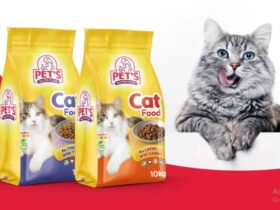
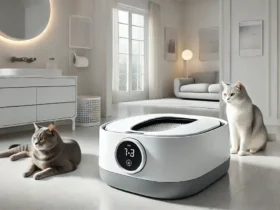
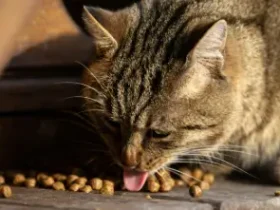
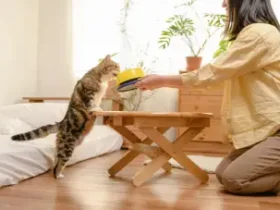
Leave a Reply